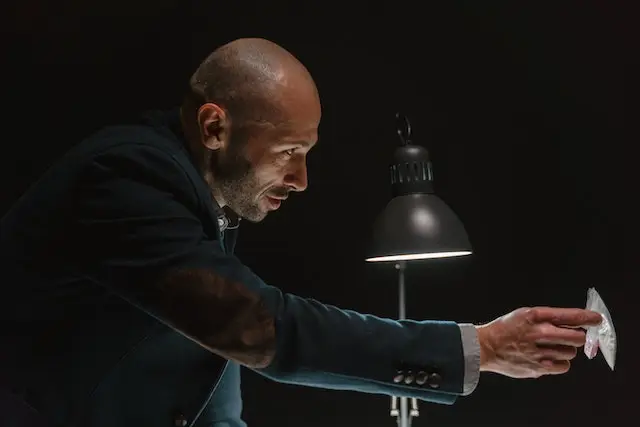What Your Mystery Villain Needs

The Hidden Mystery Villain
In most novels, the antagonist is front and center, challenging the protagonist and creating conflict and obstruction as the story progresses. But the mystery’s antagonist remains hidden until the end.
Even though your villain remains hidden, they are a driving force in your story. You need to know their motivation for the crime. And you’ll need to know how they cover the crime and hide their secret from your sleuth.
The Villain is The Antagonist
Even though your villain is not identified until the end of your mystery, they are still the antagonist. So just like any story, the character background work you do is crucial. You need to know as much about the villain as you do about the protagonist.
That background helps you find the right places to plant your hints and clues in the story. If you don’t know the villain’s details, you won’t know which details to add or when.
Motivation
If your crime is murder, the villain needs a strong motivation for killing the victim. The motivation is often the ultimate clue the sleuth unearths to reveal the villain. In order to understand the motivation, your character background should include an understanding of the villain’s personality. What is it about the villain that would push them to murder?
And you need to understand the villain’s relationship to the victim. How did they become so embroiled that some action by the victim triggered a murderous response?
Every individual has a unique response to pressure. Your villain’s attempts to hide their action and motivation from the sleuth will color how they take steps to cover up their murderous action.
Power
Your villain needs to outmaneuver the sleuth for most of the story. They may use social power to stifle the sleuth’s activities. They may be smarter than your sleuth, creating activities like red herrings and lies that lead your sleuth in the wrong direction. They may be physically powerful, cornering your sleuth and threatening their reputation or life.
Success
Through most of your story, the villain will have multiple successes. Your character background will help you find the best situations to display your villain’s talents. You want your villain to be a worthy adversary to your sleuth.
Your sleuth may not understand why the pieces of the puzzle don’t fit together or why they seem to be blocked no matter what direction they take. If you save the reasons for your sleuth’s frustrations to the villain’s actions, everything will make sense at the end. And your reader will think, I should have seen that.
The More You Know, The Less You Show
Your efforts to create a three-dimensional character for your villain give you ample details and ideas to frustrate your sleuth. When you know what your villain needs to work in the background of your mystery, you use personality traits and specific actions. A full understanding of the villain character as a person helps you use the right combination of details. There’s no reason to show everything you, as the author, know.
It’s just like research, the broader your scope, the easier it is to find the right details to fit into the story. Only 20% of research shows up in the story. But in order to know which details to use, you need a broad understanding. It’s the same when you create your villain.
When you create a full, detailed character background for your villain, you’ll be ready to plant villain clues with multiple details. They all add up in your character’s background but separate them when you sprinkle them throughout the story.
Photo by Sammy Williams on Unsplash







